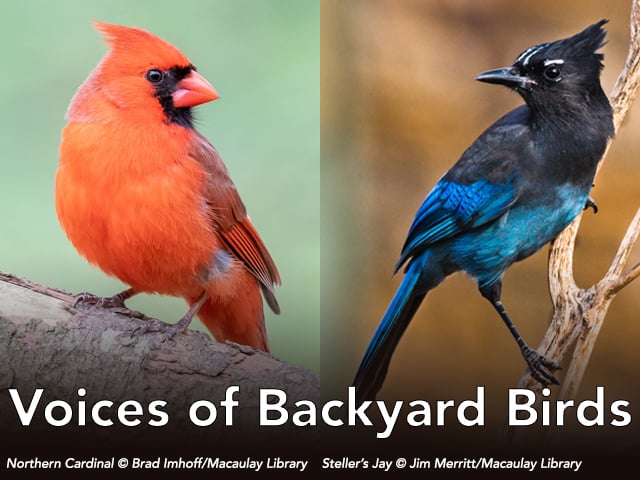How well do you know your singing warblers? Take this pop quiz featuring some of the earliest-migrating warblers in North America. Depending on where you live, they could be showing up in your neighborhood any day now! Is the bird calling in this video a Black-and-white Warbler (A), Louisiana Waterthrush (B), or Common Yellowthroat (C)?
Did you get a good listen? Check out the answer by scrolling down...
That's right, C was the correct answer!
Check out the resources below for even more bird song information.
With the advent of smartphones, many people have powerful bird song recording devices at their fingertips every time they go birding. Interested in making your own bird sound recordings, but not sure where to start? Here are our tips for recording with your smartphone.

Backyard birds sing extraordinary songs.
Have them at your fingertips with this compilation of free audio files from common species found throughout the United States and Canada. Enter your email in the form below to choose the Eastern or Western set, each with 14 mp3 files and an accompanying guide. Once you've downloaded them, you're on your way to a new appreciation of your local soundscape.
Please note: the sound files are compressed into one zip file, which needs to first be downloaded and opened on a desktop computer before individual files can be played on mobile devices.